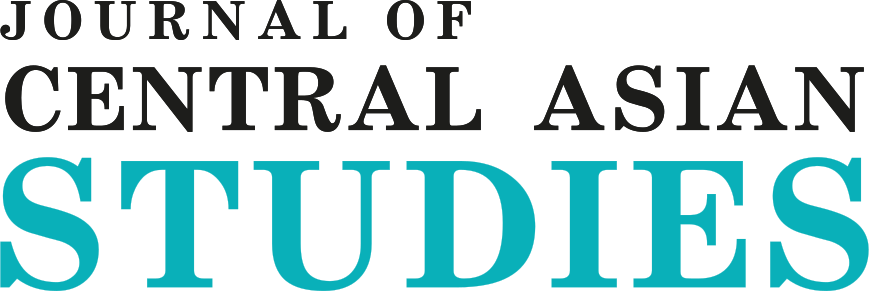Geopolitical and Economic Interests of The Usa and PRC in Central Asia
DOI:
https://doi.org/10.52536/2788-5909.2022-2.05Keywords:
Central Asia, China, energy, geopolitics, regional security, USAAbstract
The article discusses the implementation of the US foreign policy, proceeding from the fundamental values declared by the state, features of the process of “promoting democracy” at the present stage, and new risks (real and potential) for regional security. The article provides forecasts of further actions that could be taken by the PRC in Central Asia. Additionally, authors provide scenarios of future events in the region based on the analysis and a possible US reaction to those events. This article is an attempt to analyze the economic interests of China and the United States in Central Asian countries. Today, when there has not been an active geopolitical struggle in the region, it is advisable to consider the economic interests of the world powers Central Asian region and to determine how much those interests contradict or complement each other.
References
Bratersky, M. & Suzdaltsev, A. (2009) Central Asia: a region of economic competition between Russia, China, the USA and the EU. Central Asia and the Caucasus, 3 (63). URL: https://cyberleninka.ru/article/n/tsentralnaya-aziya-region-ekonomicheskoykonkurentsii-rossii-knr-ssha-i-es (access date: 05/11/2020).
Kazantsev, A. (2012) US policy in post-Soviet Central Asia: character and prospects. Vestnik MGIMO (4). [Electronic resource] URL: https://cyberleninka.ru/article/n/politika-ssha-v-postsovetskoy-tsentralnoy-azii-harakter-i-perspektivy (access date: 05.11.2020).
Bafoev, F. (2015) Medium-term priorities of the United States in Central Asia: fundamentals, incentives, adjustments. Central Asia and the Caucasus. 2015. №2. [Electronic resource] URL: https://cyberleninka.ru/article/n/srednesrochnyeprioritety-ssha-v-tsentralnoy-azii-osnovy-stimuly-korrektivy (access date: 05/11/2020).
Luzyanin, S. & Mamonov, M. (2011). China in global and regional dimensions. Resources and routes “Elevation”. China in world and regional politics. History and Modernity, 16(16), 5-31. doi: 10.24411/9785-0324-2011-00011
Bafoev, F. (2015) U.S. Medium-Term Priorities in Central Asia: Fundamentals, Incentives, Adjustments. Central Asia and the Caucasus, 18(2). p. 27-37.
Laruelle, M. & Peyrouse, S. (2013) Regional organizations in Central Asia: characteristics of interactions, efficiency dilemmas. Report N10. [Electronic resource] URL: www.ucentralasia.org/../UCA-IPPA-WP-10-RegionalOrganizations-Rus.pdf (access date: 20.11.2021).
Mosakova, E. (2017) Theoretical foundations of the competitiveness of countries in the modern global world. Economics and management: problems, solutions 2 (2). p. 3–10.
Sultanov, Sh. (2018) Geopolitics of Russia in Central Asia: economic interests, state and prospects of cooperation. Competitiveness in the global world: economics, science, technology, 1 (60) pp. 100–104.
Gumarova, I. (2008) Priorities of energy diplomacy of Russia: dis. cand. polit. Sciences. P. 325.
Denisov, E. (2013) Energy component of international relations in modern Central Asia: author. dis. cand. history Sciences. P. 23.
Komilova, Kh. (2015) The role and place of integration structures in the system of international relations in Central Asia. Bulletin of the Tomsk State University. History, 4 (36). pp. 73-78.
Liang, Zh. (2017) Chinese diplomacy in Central Asia in the 1990s. Socio-political sciences, (1). pp. 17-21.
Chernitsyna, S. (2015) The role of energy diplomacy in shaping Russia's foreign policy at the present stage: dis. cand. history Sciences. P.175.
Valentina, B. (2015) DKB – ODKB – neprostoj put' k kollektivnoj bezopasnosti [CST - CSTO - a difficult path to collective security] Science and world. 2(18). pp.10–14.
Dogovor o kollektivnoj bezopasnosti [Collective Security Treaty] [Electronic resource] URL: http://www.odkb-csto.org/documents/detail.php?ELEMENT_ID=126 (access date: 20.03.2017).
Zhiltsov, S. (2015) Kaspijskij region: novye ehnergeticheskie potoki i novye Vyzovy [Caspian region: new energy flows and new Challenges]. Kaspijskij region: politika, ehkonomika,kul'tura, 3 (44). pp. 64-71.
Kazantsev, А. (2008) Bol'shaya igra s neizvestnymi pravilami: mirovaya politika i Tsentralnaya Аziya [Big Game with Unknown Rules: World Politics and Central Asia] Nasledie Evrazii. p. 248.
Kireev, G. (2006) Rossiya-Kitaj. Neizvestnye stranitsy pogranichnykh peregovorov [Russia-China. Unknown pages of border negotiations] Rossijskaya politicheskaya ehntsiklopediya. p. 416.
Downloads
Published
Issue
Section
License
Copyright (c) 2022 Makhammaduly S., Raev D.

This work is licensed under a Creative Commons Attribution 4.0 International License.










 Open content is licensed under the CC-BY
Open content is licensed under the CC-BY 


